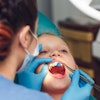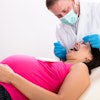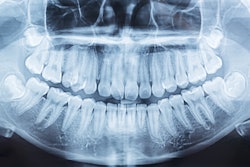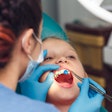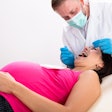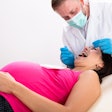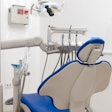
Postmenopausal women with HIV may experience increased tooth loss, which can be attributed to the degradation of alveolar trabecular bone microarchitecture, according to a study recently published in BMC Oral Health.
Additionally, postmenopausal women with HIV had elevated levels of gingival crevicular fluid (GCF) receptor activator of nuclear factor kappa beta ligand (RANKL) that may contribute to tooth loss, the authors wrote.
“Since postemenopausal women with HIV have accelerated skeletal long bone loss, it may be possible that they also experience greater alveolar bone loss leading to increased severity of periodontal disease,” wrote the authors, led by Dr. Sunil Wadhwa of the Columbia University College of Dental Medicine. (BMC Oral Health, January 8, 2024, Vol. 24:52.)
With the progress of antiretroviral treatment, individuals with HIV are living longer. In the U.S., most women with HIV are over the age of 50, and those who have undergone menopause have an increased likelihood of skeletal bone loss. To date, few studies have explored oral and possible alveolar bone loss in middle-aged women and older with HIV.
To evaluate periodontal disease and alveolar bone in postmenopausal women with HIV, 135 women were enrolled in the study. Among them, 76 were women with HIV who were taking antiretroviral therapy with virological suppression. Fifty-nine women study participants did not have HIV.
The women underwent comprehensive periodontal examinations, which included probing depth, clinical attachment level, and bleeding on probing measurements for six sites per tooth. Alveolar crest height was measured from intraoral x-rays, according to the study.
Postmenopausal women living with HIV exhibited a significant reduction in the number of teeth compared to those without HIV (HIV positive: 17.75, +/-7.62 teeth; HIV negative: 22.79, +/-5.70 teeth; p < 0.001). Furthermore, dental X-rays showed that women with HIV had more alveolar bone loss (HIV positive: 3.26, +/-1.28 mm; HIV negative: 2.72, +/-1.01 mm; p = 0.01) compared to women without HIV, according to the study.
Additionally, women with HIV exhibited a significantly elevated expression of GCF RANKL, the major cytokine involved in periodontal disease-associated alveolar bone resorption (HIV positive 3.80, +/-3.19 pg/µl; HIV negative: 1.29, +/-2.14 pg/µl ; p < 0.001), the authors wrote.
However, the study had limitations. Its limited sample size poses challenges in generalizing the findings to the entire population of people with HIV, the authors acknowledged.
“(Nevertheless), the results of this study add to the literature a better understanding of the impact of aging and menopause on PWH (people living with HIV), Wadhwa and colleagues wrote.


